11 Best Long Flight Time Drones
Drones are so much fun that it’s inevitably a battle to decide who gets the controller. With drone battery life being what it is, the stakes are high. That changes once you buy a long-lasting drone with a 30 minute flight time. It gives you ample time to fly around and get the images you want.
We wrote this guide to give you tips on how to increase your battery life and to help you pick a drone with the longest battery life. We’ve reviewed the most popular drones and picked the best ones.
| Budget |
|---|
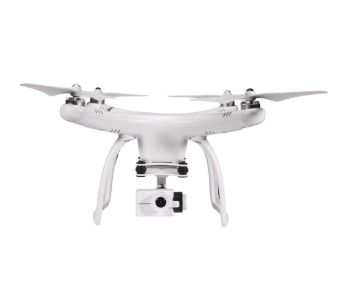 |
| UPair One FPV |
| 4.0/5.0 |
| Range: 800m (0.5 miles) |
| Flight time: 18 minutes |
| This has a Return to Home failsafe feature. |
| Check Amazon |
| Best Value |
|---|
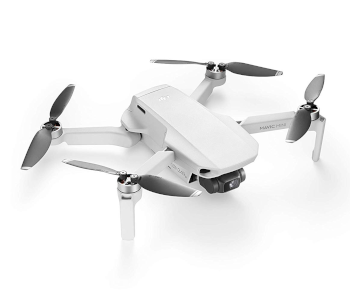 |
| DJI Mavic Mini |
| 4.8/5.0 |
| Range: 5km (2.5 miles) |
| Flight time: 30 minutes |
| Small, sturdy, easy to control indoors and out. |
| Check Amazon |
| Top Pick |
|---|
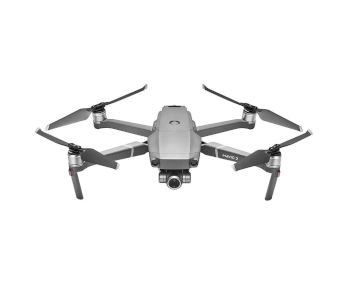 |
| DJI Mavic 2 Zoom |
| 4.7/5.0 |
| Range: 8 km (5 miles) |
| Flight time: 31 minutes |
| Has a long flight range and automated flight modes. |
| Check DJI.com |
Why do Drones Fly so Short
Ideal Flying Conditions
Beware of Proprietary Technology
Battery Composition
Battery Charging Times
Summing Up Drone Batteries
Drones by Flight Time:
The table below gives a quick glance at my top 10 picks in order of longest to shortest flight times.
Long Flight Time Drones Comparison Table
| Make and Model | Max Flight Time | Charging Time | Price |
|---|---|---|---|
| DJI Mavic 2 Zoom | 31 minutes | 90+ minutes | Check Price |
| DJI Mavic Mini | 30 minutes | 270+ minutes | Check Price |
| DJI Mavic Pro | 27 minutes | 60+ minutes | Check Price |
| Blade Chroma 4K | 30 minutes | 60+ minutes | Check Price |
| DJI Phantom 4 Pro | 30 minutes | 210 minutes | Check Price |
| Traxxas Aton Plus | 25 minutes | 90 minutes | Check Price |
| Yuneec Typhoon H | 25 minutes | 50+ minutes | Check Price |
| Yuneec Q500+ | 25 minutes | 120 minutes | Check Price |
| Parrot Bebop 2 | 24 minutes | 55+ minutes | Check Price |
| UPair One | 18 minutes | 90 minutes | Check Price |
| Hubsan H501S | 20 minutes | 150 minutes | Check Price |
I’ve arranged these long flying crafts into three categories for easy reference:
- 27 – 31 minutes
- Up to 25 minutes
- Less than 25 minutes.
Remember to pay attention to battery charging times and any other features you demand from a good quality UAV, for example recording capabilities, flight speed, First Person View (FPV), and so on.
Drones With Flight Times From 27 – 31 Minutes
Heavier payloads mean shorter flight times. Every second is valuable if your projects are long and the equipment heavy. The drones in this section give you up to 31 minutes in the air.
Obviously, you want a quality camera. And yes, you demand a drone that’s easy to handle. But you’re on a difficult mission if the UAV can’t stay in the air for long. These top picks won’t let you down.
1. DJI Mavic 2 Zoom
Editor’s Rating: 4.7/5
The DJI Mavic 2 Zoom is an exceptional quadcopter with a 24-48mm optical zoom camera. That’s a first. It’s a feature-packed flying robot that has the potential to stay in the sky for over 30 minutes.
It’s fair to say the DJI Mavic 2 Zoom and Pro have set new standards for camera quads in this class. The model here has a high-quality 12MP camera with a 24-48mm optical zoom lens.
Fly Faster, Longer, Further, and Quieter
Short battery life annoys drone pilots more than anything else. The good news is that DJI’s Mavic 2 Zoom has the longest flight times available for a civilian quadcopter. That means aerial photographers and videographers can stay in the air longer and travel further. And the incredible 44.7 mph top speed in Sport Mode gets you to where you’re going—and back again—in no time.
The Mavic 2 Zoom also features DJI low-noise flight technology. It seems they’ve managed to lower the volume with some clever tweaking of the rotors. The noise of a drone can be irritating after a while, so this is one of those small things that make a big difference.
The Mavic 2 Intelligent Flight Control Options
The Mavic 2 Zoom is easy to pilot while capturing aerial footage. The feature-packed 2 Zoom comes with sensors on all sides to keep it safe by avoiding obstacles. There are three ways to fly this puppy. The first is by using the DJI controller. The second is with a smartphone connected to the controller using the DJI Go 4 app. And the third uses the Intelligent Flight Modes (see below).
DJI’s Intelligent Flight Modes include Waypoint Navigation, TapFly, ActiveTrack, and Hyperlapse. Others are POI (Point of Interest), QuickShots, and Cinematic Mode. There’s a lot to explore, but none of it’s difficult to fathom or hard to grasp, not even at the beginner level.
The Not So Good
The cost of spare DJI Intelligent Flight Batteries for the Mavic 2 is depressing. Prices can vary slightly, but they cost $130+. The other negative is the absence of gesture control, but it’s possible this will be included in a software update.
| Tech Specs |
|---|
| Weight: 900g (2 lbs.) |
| Battery: 3.83V 3850mAh 1 S Intelligent Flight Lithium-Ion |
| Charging time: 90+ minutes |
| Control range: 5 mile (8 km) |
| Max flight time: 31 minutes |
| Max speed: 70.8 km/h (44 mph) |
| The Pros |
|---|
| Long flight time |
| Long control range |
| Foldable, lightweight design |
| Superfast in Sport Mode |
| Exceptional camera with zoom |
| Quiet for a camera quad |
| 360 degree collision detection |
| Panoramas |
| The Cons |
|---|
| The high cost of extra batteries |
| No gesture control |
2. DJI Mavic Mini
Editor’s Rating: 4.8/5
Short flight times are the curse of drones, and those with the longest are in the highest demand. The all-new DJI Mavic Mini camera quad is one of them, boasting a full half-hour on a single charge.
- Best feature 1: 30 minutes of flight time on a single charge
- Best feature 2: Ultra-light, foldable, and highly portable
- Plus points: Easy to use, high-quality gimbal camera, dedicated controller, long range
- Minus points: No collision avoidance
Reasons to Consider the DJI Mavic Mini
The new DJI Mavic mini is perfection in a pocket. Seriously, this high-quality foldable camera quadcopter fits easily into a small bag or large pocket. And its compact size doesn’t come at a cost to features. All pilots will find controlling the Mini a breeze even at the entry-level. The new and intuitive DJI Flight App has simple tap controls and even includes a beginner’s Flight Tutorial.
A Traveler’s Dream Camera Quad
The Mini shoots high-quality 2.7K HD video and takes 12MP aerial stills. A 3-axis gimbal and ultra-smooth flight performance keep the quad stable and its footage smooth. There’s no short flight window to panic over when recording precious moments, either. That’s thanks to the incredible 30 minutes flying time on a fully charged battery and an impressive 4km control range.
Safety features include propeller protection, stable hover, and precision flights. The Mini uses 360° prop guards to shield the blades from damage and fingers from harm. Advanced vision sensors and GPS make sure this flying camera maintains meticulous movements at all times.
DJI Mavic Mini Controller
The Mavic Mini has its own dedicated controller that keeps the same compact theme. Its control sticks detach so that you can store them inside the unit to make it more portable. There’s a clamp to accommodate Android and iOS smartphones. That lets you use the phone screen to see what the camera sees in HD video for up to 2.5 miles.
The Not So Good
The Mini’s vision system and GPS provide precision control. However, there’s no collision avoidance as such. Still, that’s more an observation than a shortcoming. It’s too early to find any annoying flaws. And DJI is not going to highlight any imperfections, so we’ll have to wait a while. There’s sure to be a few cons—there always are. Even so, we don’t expect any deal-breaking defects to materialize.
| Tech Specs |
|---|
| Weight: 249g (0.54 lb., 8.78 oz.) |
| Battery: Intelligent Flight 2400 mAh |
| Charging time: 270 minutes (4.5 hrs.) |
| Control range: 5km (2.5 miles) |
| Max flight time: 30 minutes |
| Max speed: 48 km/h (30 mph) |
| The Pros |
|---|
| Easy quad for entry-level pilots |
| Foldable, ultra-light & compact |
| High-quality, gimbal camera |
| Advanced vision sensors + GPS |
| Fast top speed |
| Protective 360° prop guards |
| Excellent value |
| The Cons |
|---|
| No collision avoidance |
| No 4k camera |
3. DJI Mavic Pro
Editor’s Rating: 4.5/5
This is another impressive quadcopter by DJI. It also happens to be the smallest camera drone in their range. The DJI Mavic Pro is an easy to handle UAV, though the target buyer is at the prosumer level.
The Mavic’s battery gives you a maximum flight time of 27 minutes. The short 60 minute recharge time is another welcome feature. The drone’s speed is 40 mph which is pretty average in this class.
Having a long battery life is essential if you need distance flying. Well, at 7km, you can take the DJI Mavic Pro to those hard to get places that were impossible to reach just a few years ago.
This really is a superb traveler’s drone thanks to its lightweight and compact design. Don’t let its tiny size fool you into thinking it lacks in features or performance. There’s a lot going on in a tiny package.
The little handheld remote controller (RC) unfolds to house either an Android or Apple mobile device. Once connected, the controller automatically finds the smartphone via RC or WiFi.
Now you get to enjoy live-feed, presented as crisp, smooth viewing in 1080p. The DJI Go app lets you control settings via the phone’s screen, but the manual controls are never far away if you need them.
You’ll need to invest in some DJI Goggles if you want to enjoy the ultimate First Person View (FPV) experience. They’re so sophisticated and responsive they deserve a review page all of their own.
Let me give you some idea of how advanced these goggles are. For example, you can control the drone and its camera simply by shifting your head using tilt-and-turn movements. It’s FPV on steroids!
Mavic Pro Platinum: DJI has recently released the Mavic Pro Platinum. It has a longer flight time of 30 minutes and a 60% noise reduction. It costs just $100 more.
The camera is another fine feature of the DJI Mavic Pro. It delivers 4K video footage and impressive 12MP photos. The 3-axis gimbal makes sure the camera remains stable and the images sharp
This is a powerful little camera despite its size. It sports a 2.3″ sensor that can capture still images in JPEG and DNG RAW formats. There’s a variety of resolutions and frame rates to choose from as well.
The DJI Mavic Pro has all the best attributes that the DJI Phantoms boast. It also has a few of its own features bolted on to make it stand out.
One downside would be the crafts inability to perform well in blustery conditions because of its lightweight. There’re a few complaints about how it underperforms in low light conditions too.
The Mavic Pro’s lens has a narrower field of view (FOV) compared to other drones in its class. This is certainly something to think about at the decision-making stage.
Overall, though, you get a reasonably priced consumer drone that boasts a long battery life (flight time), superb optics, and long range. The lugability factor is another of the drone’s selling points.
| Tech Specs |
|---|
| Weight: 735g (1.6 lbs.) |
| Battery: 2970mAh |
| Charging time: 60+ minutes |
| Control range: 4.3 mile (7 km) |
| Max flight time: 27 minutes |
| Max speed: 18 m/s (40 mph) |
| The Pros |
|---|
| Long battery life |
| Fast charging time |
| Very portable (small and foldable) |
| Lightweight |
| Foldable controller (Smartphone compatible) |
| Long control range |
| Impressive flight modes |
| Obstacle avoidance system |
| FPV Support |
| Quality camera and gimbal |
| The Cons |
|---|
| Not so good in breezy conditions due to lightweight |
| Field of View (FOV) quite narrow |
| Field of View (FOV) quite narrow |
4. Blade Chroma 4K
Editor’s Rating: 4.5/5
The Blade Chroma quadcopter is a great choice for anyone who wants a compact, no-fuss AUV that’s ready to fly (RTF) out of its box. Portability and light weight makes this a good travel drone.
The Smart Mode is perfect for first-time flyers who want to get serious about drone photography and video. The Aerial Photography (AP) mode gives extra controls to more experienced pilots.
In ideal conditions, the Chroma’s battery gives you around 30 minutes of flight time. The craft’s top speed is around 40 mph and the flight range about 600m. Some of you will find that too restrictive.
The ST-10+ remote controller (RC) helps to keep flying simple. There’s a built-in 5½ inch touchscreen display that sports an Android interface. This lets you enjoy live video and real-time telemetry:
You’ll love this RC if you like fingertip controls without having to attach a separate mobile device. You can control drone speed, altitude, flight modes, and camera operations, all in first-person-view (FPV).
The Blade Chroma comes equipped with a 4K/1080p/60 fps video and a 3-Axis, stabilized HD no-distortion camera. And for stills photography, you get clear, sharp 16MP images.
I really like the Watch Me and Follow Me flight modes with this drone. They’re useful because they let you concentrate on composing images and shooting video while the drone gets on with the flying.
Other impressive features include the Tracking mode, Return Home, and the Adjustable Flight Boundaries. There’s certainly a lot on offer, but it won’t suit everyone.
The Wi-Fi is not Lightbridge (the most powerful technology), and there’re some complaints about the delay. Other popular features are missing too, like Point of Interest (POI), and Waypoint flight.
There’s no such thing as the perfect UAV. Personal tastes, needs, and expectations will always differ between people. What I can say, though, is that the Blade Chroma’s a reliable, stable camera drone.
The Blade Chroma will fall short on a few automated flight options compared to some other models in its class. It’s still a worthy competitor if it checks enough of your own personal preferences.
| Tech Specs |
|---|
| Weight: 1315 g (2.9 lbs.) |
| Battery: 11.1V 3S 6300mAh Li-Po |
| Charging time: 60+ minutes (1+ hr.) |
| Control range: 600m (1,968 ft.) |
| Max flight time: 30 minutes |
| Max speed: 18 m/s (40 mph) |
| The Pros |
|---|
| Excellent battery life |
| Smart Flight mode for beginners |
| Quality CGO3 4K camera |
| All-in-one ST10+ transmitter |
| Built-in Android operated display |
| The Cons |
|---|
| WiFi could be better |
| Few missing features |
| Cost of spare battery |
| Fairly short flight range |
5. DJI Phantom 4 Pro
Editor’s Rating: 4.3/5
It’s fair to say that DJI sets the standards when it comes to quality consumer drones in both affordability and technology. DJI market their Phantom 4 Pro and 4 Pro+ at the prosumer level.
This is a sophisticated UAV but it’s easy enough to control. The higher cost and extra power may prove too much for the complete beginner, though. I personally think it’s better suited for pro-level activities.
The Phantom 4 Pro has an impressive 30 minute maximum battery life. It has an even more impressive 7 km flight range. The top speed of 45 mph lets you reach your destination in good time.
For the ultimate experience in First Person View (FPV), consider DJI’s own Goggles. They may not look too comfortable, but they are. They put your eyes right up there in the sky as you pilot your drone.
A reasonably fast drone is useful in situations when you need to exploit the long-distance capabilities. The sooner you get to where you want to be using FPV, the quicker you can start shooting.
The controller—like the drone—is compact and well thought out. It operates at 2.4 GHz and 5.8 GHz respectively. These frequencies give you optimal flying experiences in both urban and open spaces.
You need to attach a mobile device to the Phantom 4 Pro. Alternatively, you can opt for the costlier Pro+ model which comes with an ultra-bright integrated display—perfect for bright days.
This drone has four directions of capable obstacle avoidance. Not having to worry about crashing into trees and buildings makes for a more relaxing and safer flying experience.
The high image quality for a drone in this class takes some beating. The upgraded 20 megapixels camera shoots 4K video at 60fps. The dynamic range and low light performance have improved too.
The camera even has a mechanical shutter. This is an improvement in the electrical shutter because it’s better at capturing faster moving objects. The images are clean, crisp, and free from distortion.
Both the Phantom 4 Pro and Phantom Plus have some great flight modes like Gesture Control, Advanced Return Home, and Reverse TapFly, to name a few.
There’re a few reasons why this capable UAV doesn’t have the top slot. First is the setup, which can be fiddly, even for more experienced users. There are some criticisms about the sketchy User Guide too.
Some users complain about the obstacle avoidance. It seems that the system fails, or is slow to respond when approaching leafless trees. In other words, it doesn’t always recognize bare twigs.
The final gripe is the need of a mobile device for the controller. Most drone pilots like the integrated screen that comes with the Phantom 4 Pro+ model, but not the extra 300 bucks DJI charge for it.
It’s hard to pick any major faults with this drone. You won’t find too many complaints from those who own one. The main tech specs, pros, and cons below will help you to make a better-informed decision.
| Tech Specs |
|---|
| Weight: 1388g (3.1 lbs.) |
| Battery: Li-Po 4S 5,870 mAh |
| Charging time: 210 minutes (3.5 hrs.) |
| Control range: > 7000 meters (7 km) |
| Max flight time: 30 minutes |
| Max speed: 20 m/s (45 mph) |
| The Pros |
|---|
| Long battery life (flight time) |
| Long flight range |
| 4K video, 60fps |
| 20MP Raw and JPG images |
| Automated flight modes |
| Built-in RC screen (Pro+ only) |
| Gimbal lock |
| Excellent Sport mode |
| Obstacle detection |
| Wide angle 24mm lens |
| The Cons |
|---|
| High price |
| High cost of spare batteries |
| Fiddly for novice to set up |
| Tiring firmware updates (at the time of writing) |
Drones With Flight Times Up to 25 Minutes
We talk about maximum flight times in minutes. If you’re used to flying consumer drones you’ll know how long and precious every single second is. The four picks here give you around 25 minute’s tops.
Pay close attention to other features that matter to you aside from battery life. Perhaps flight range is important as well, or the drone’s top speed, its size, and flight modes, etc. They’re all in the reviews.
6. Traxxas Aton Plus
Editor’s Rating: 4.8/5
The Traxxas Aton Plus has an unusual design that makes it look a bit like a flying race car. It’s a good quality little quadcopter that’s fun to fly at all levels, including beginner.
I suppose it looks a bit toy-like compared to some of the other UAVs in this guide. Don’t let that put you off. I can promise you it’s a very capable camera drone that gives around 25 minutes of flight time.
The Traxxas Aton Plus is fast too, reaching top speeds of around 50 mph. The makers have restricted both the distance and the altitude of this UAV for beginner’s convenience, though it’s not fixed.
Once the drone reaches its outer limits—400 ft. high and 500 ft. far—it automatically heads back home. It’s a good safety feature for beginner and mid-level pilots.
The controller is simple in design and clutter free. There’s even a spare set of thumb pads and different control sticks to choose from. The LCD screen is also simple, but it lets you know what’s going on.
Aton’s flight controller displays the following:
- Transmitter battery level
- Current flight mode
- Throttle rate
- AUX indicator: initiates flips and rolls (Sport Mode only)
- AUX2 is the “brakes” button (gets you out of trouble)
You need to download the Traxxas Flight Link app to your smartphone. You can then customize various flight settings like Geofence Radius, control rates, the flight ceiling, and others.
At the time of writing, there is no First Person View (FPV) option but the company has promised this in a future upgrade. Another upgrade in the pipeline is 3-axis gimbal control.
The Traxxas Aton Plus doesn’t come with its own camera so you’ll need to add one of your own. There’s a camera attachment that accommodates the popular GoPro range or other action cameras.
I think the various safety features are a welcome addition for new UAV pilots. You often hear about the notorious drone “flyaways” that some novice pilots suffer. This can’t happen with the Aton Plus.
More experienced flyers can change these safety settings using the Flight Link app for iOS and Android devices. I also like the way the drone makers constantly work on performance upgrades.
The drone also has a good range of flight modes to suit beginner and more experienced flying needs.
The major downside is the absence of a camera. If you want a high-quality camera drone, then you have to choose your optics with care. It’s then a case of experimenting to achieve optimal results.
| Tech Specs |
|---|
| Weight: 860g (1.9 lbs.) |
| Battery: 5000mAh 3S LiPo |
| Charging time: 90 minutes |
| Control range: 152m (500 ft.) |
| Max flight time: 25 minutes |
| Max speed: 18 m/s (40 mph) |
| The Pros |
|---|
| Long battery life (flight time) |
| Good beginner and expert UAV |
| Upgrades in the pipeline |
| Decent range of flight modes |
| Safety features |
| Long control range |
| Fast top speed |
| Easy to get spare parts |
| The Cons |
|---|
| No camera |
| Toy-like appearance |
| No FPV at the moment |
7. Yuneec Typhoon H
Editor’s Rating: 4.6/5
The Yuneec Typhoon H is a 6-rotor UAV aimed at the prosumer market. Advanced beginners should find it easy to handle, but its pro features make it a popular choice among more experienced pilots.
The Yuneec Typhoon H’s battery will keep you in flight for up to 25 minutes in ideal conditions outdoors. Some adventurous pilots may find the one mile control range a little restrictive.
This drone has a top speed of around 22 mph. This is below average for a UAV in this class. You may not want or need faster speed, though. Higher speeds would only drain the battery quicker anyway.
Once the drone reaches its outer limits—400 ft. high and 500 ft. far—it automatically heads back home. It’s a good safety feature for beginner and mid-level pilots.
The controller is simple in design and clutter free. There’s even a spare set of thumb pads and different control sticks to choose from. The LCD screen is also simple, but it lets you know what’s going on.
Aton’s flight controller displays the following:
- Transmitter battery level
- Current flight mode
- Throttle rate
- AUX indicator: initiates flips and rolls (Sport Mode only)
- AUX2 is the “brakes” button (gets you out of trouble)
How users view drone remote controllers (RC) is subjective. Few people will dislike the ST16 all-in-one Ground Station transmitter/receiver which operates on the Android platform.
What makes it stand out is the beautiful 7″ integrated screen. It gives a clear, bird’s eye view of your footage in real-time. This is another of those controllers that don’t need a separate mobile device.
The ST16 makes programming autonomous flight, videoing, and photography a piece of cake. Digital video downlink (DL) is in HD 720P, visible on the ST16 bright display.
You can also use another, more compact, second controller with the Yuneec Typhoon H. It’s called the Wizard. This is ideal for controlling the flight path and as a homing device.
The idea of using two controllers is so that one person can take charge of the flying with the Wizard. The other person can then concentrate on the footage using the main ST16 controller.
There’s only one way to enjoy the ultimate First Person View (FPV) with the Yuneec Typhoon H. That is to invest in the Yuneec Skyview FPV Headset. Its built-in screen gives an image quality of 720p.
Despite looking cumbersome, the Skyview FPV headset is incredibly comfortable. Thanks to the adjustable headband you can even wear it with eyeglasses.
The CGO3 camera is high-quality and stabilized by a 3-axis gimbal. The UHD (Ultra High Definition) 4k video is remarkably clear and super stable. Still images are equally as impressive at 12MP.
There are other welcome features for creative photographers and videographers. You have the ability to manually control the camera’s settings during flight. This includes the lens’ 360° range of motion.
The five intelligent task modes are another great selling point. There’s Point Of Interest, Curve Cable Cam, Follow Me/Watch Me, Orbit, and the Dynamic Return to Home.
I also like the way you can fold everything away to make the craft more portable. The Retractable landing gear also means the legs don’t obstruct the view when shooting at 360°. The arms fold too.
I don’t like the long battery charge time that can take two hours. This is double some of the other drones in this guide. Another common gripe is that the camera mount is not as stable as it could be.
All in all, there’s a lot to shout about with the Yuneec Typhoon H. If you want a capable aerial drone with a few pro features at a consumer price, I’d say put it on your shortlist.
| Tech Specs |
|---|
| Weight: 860g (1.9 lbs.) |
| Battery: 5000mAh 3S LiPo |
| Charging time: 90 minutes |
| Control range: 152m (500 ft.) |
| Max flight time: 25 minutes |
| Max speed: 18 m/s (40 mph) |
| The Pros |
|---|
| Long battery life (flight time) |
| OK operating range |
| 6-rotor design |
| Spare battery included |
| Fully-rotating 4K camera |
| High quality stills and video |
| Retractable landing gear |
| RC with integrated display |
| Obstacle avoidance |
| Dual-operator control |
| The Cons |
|---|
| Have to lower landing gear before landing |
| Long recharging time |
| Slow top speed |
8. Yuneec Q500+
Editor’s Rating: 4/5
If you like sophistication, good looks, and a drone that’s RTF (ready to fly) out of the box, you’ll want to consider the Yuneec Q500+. This is a bird that pleases beginners and prosumers alike.
The battery on this baby will keep you in the air for up to 25 minutes in ideal flying conditions. At just 18 mph, this is not a fast UAV. But it is big, it’s stable, and an excellent all-round aerial camera drone.
Note that this is not a long range craft. If you need more distance than the Q500+’s 642m, skip this review. If not, keep reading to learn about the fascinating features of this amazing flying robot.
The design is awesome. It looks a bit like an eagle with outstretched wings. Yet controlling this craft is a cinch despite its large size. This is all thanks to the intuitive ST10+ remote controller (RC).
The RC has everything you need at your fingertips. The top half has the flight control buttons. The bottom of the controller has an in-built 5.5″ Android touchscreen. This is great for flying FPV.
The ST10+ RC looks different from those found with a lot of drones, but it works really well. After just a couple of hours, it’ll seem like a natural extension to your arms.
The CGO3 3-axis gimbal camera and digital video downlink (DL) is quite special. Using the ST10+ RC you can take full control over the camera’s tilt angle direction to compose the perfect shots.
Another unique feature is the Handheld SteadyGrip™ (included). The idea behind this is so that you can use the gimbal camera at ground level as well as in the sky.
The CGO3 is a very capable 4K 3-axis gimbal camera drone offering UHD (ultra-high definition) resolution. There’s the option to record real-time video in 1080p direct to the LCD touchscreen.
Having the ability to capture footage in 4K is something that every drone pilot longs for. For stills photography, you have 12MP images that provide exceptional photos showing minute details.
There are three flight modes that all use GPS. You have Smart Mode, Angle Mode, and the Home Mode. Smart Mode is basically the beginner mode whereas Angle Mode is for more experienced pilots.
There’s a lot to like about the Yuneec Q500+. One of the key selling points for me is what it includes in the box. You really do get a lot of bang for your buck:
- ST10+ remote controller
- Two drone batteries (a spare battery is unusual with drones)
- Battery charger
- Sunshade for the RC
- Bade removal tool
- 8GB microSD with adapter
- Four extra blades
- Handheld SteadyGrip™ for using the camera on the ground
- Aluminum carry case
I personally like the large size of the Yuneec Q500+, but it does make it less luggable than many other drones in its class. Some users say it feels a bit sluggish and unresponsive because of its size.
It’s not a fast drone so that probably has something to do with it. Another gripe—though not by many—is that the RC is a little bulky and busy. I think it’s the perfect complement for the actual craft.
These minor complaints are subjective. It depends what people have flown before the Yuneec Q500+, and their expectations. Overall, there’s a lot more to like with this UAV than dislike—a lot more.
| Tech Specs |
|---|
| Weight: 1130g (2.5 lbs.) |
| Battery: 5400mAh 3S 11.1V LiPo |
| Charging time: 120 minutes (2 hrs.) |
| Control range: 642m (0.4 miles) |
| Max flight time: 25 minutes |
| Max speed: 54.5 mph (90 km/h) |
| The Pros |
|---|
| Big and stable |
| Smart design |
| Spare battery included |
| Extra propellers |
| The Cons |
|---|
| Drone too big for some |
| Video feed not HD |
| RC not to everyone’s liking |
Drones With Flight Times of Less than 25 Minutes
My final three picks all have less than 25 minutes of maximum battery life per charge. These are still capable drones with good flight times. None of the UAVs in this section fall below 18 minutes.
9. Parrot Bebop 2
Editor’s Rating: 4.3/5
I think the Parrot Bebop 2 is one of those consumer drones that you either like or you don’t. I say this because of the design, and not because it falls short on features or functionality.
This is a capable and compact craft that anyone can enjoy at any level. It’s impressive battery life gives you a fight time of around 24 minutes—in ideal conditions—and a top speed of 36 mph.
Skip this review if you’re looking for a long range drone. The Parrot Bebop 2 delivers on a lot of fronts, but distance isn’t one of them. You’d be lucky to get 300m. If that’s enough then keep reading.
The Sky Controller (Transmitter)
The chunky Sky Controller has everything you need but it does make things less portable. Still, you can always control the drone using a smartphone. The downside of a phone is fewer control options.
The two main benefits of flying this drone with its own Sky Controller include:
- Controls are much more intuitive and responsive
- Controller comes with a big antenna which improves the communication quality
There are plenty of reasons to favor the Sky Controller over a smartphone. Your flights are smoother and more stable over longer distances. And your video and photographic footage is better as a result.
You’re in for a treat with the FPV Parrot Cockpit glasses (included in bundle) if First Person View is something that interests you. The goggles actually use your smartphone as its display screen.
To get started just connect the FreeFlight Pro app to your smartphone and place it into the comfortable Cockpitglasses. That’s it. You’re ready to take the pilot’s seat and control your UAV from above.
The drone comes with a built-in 1080p, full HD front-facing camera with a 3-axis digital-stabilization system. It’s well put together and produces pretty good quality video and stills.
Personally, I’m not a big fan of large circular fisheye lenses but a lot of people are. For the money, this craft has plenty to offer as a camera drone. Just make sure it checks all your boxes before deciding.
It’s easy to fly and gives plenty of value for the money. The video footage is stable and the battery life is above that of many other drones in its class. The flight app works with both iOS and Android phones.
It’s important to note that this is a fixed-wing quadcopter with quite a bulky controller. If you need something foldable and more portable, the Parrot Bebop 2 might not make your shortlist.
For everyone else, the FPV kit should help to sway your decision. At just under 500 bucks you can’t really go wrong with the Parrot Bebop 2 FPV bundle, which includes the Parrot Skycontroller 2.
| Tech Specs |
|---|
| Weight: 500g (1.1 lb.) |
| Battery: 2700 mAh battery |
| Charging time: 55 minutes |
| Control range: 300 m (984 ft.) |
| Max flight time: 24 minutes |
| Max speed: 16 m/s (36 mph) |
| The Pros |
|---|
| Long battery life (flight time) |
| Small and sturdy |
| Easy to control indoors and out |
| 4MP camera (fisheye-lens) |
| First Person View (FPV) |
| Digital image stabilization |
| The Cons |
|---|
| Limited flight range |
| Limited 8GB storage |
| Average video/photos |
10. UPair One FPV
Editor’s Rating: 4/5
Some refer to the Upair One quadcopter as a DJI copycat. I disagree. It’s a great cinematic mid-priced drone for beginners and above. In my opinion, it’s a UAV that offers exceptional value for money.
This drone will give you up to 18 minutes of continuous flight time in ideal conditions. It has a top speed of around 31 mph and a flight range of half a mile. That last point may disappoint some.
New drone buyers tend to look more at the craft and less at the remote controller (RC). For the best flying, filming, and photographic experiences, you want both to meet your needs and expectations.
The good news is that the Upair One has an amazing controller. I’m not only referring to its stylish design either. You get a big clear 7″ built-in display that’s great for flying in First Person View (FPV).
The screen is certainly a step up from that of any smartphone FPV experience. The RC is an intuitive piece of kit that’s incredibly easy to use—at any level.
There are two camera versions available, 2.7K HD and 4K UHD. The 4K version costs a bit more, but not by much. The cameras mount onto an average 2-axis gimbal to reduce camera shake in flight.
Not having the ability to tilt and rotate the camera during flight is a disappointment. The video quality and stills photos were not disappointing, though.
You can’t really expect much more from a camera drone costing around 300 bucks. I’d go as far to say that this is one of the best UAVs with a built-in GPS system for this kind of money.
Its popular features include a one-key Return to Home feature and a failsafe Auto-return. There’s also the Intelligent Orientation control and Position Hold to boot.
The biggest letdown for me has to be the 2-axis gimbal. Even with decent optics, there’ll always be a few occasions where the gimbal isn’t able to stabilize the image completely.
It would be unfair to complain too much given the excellent overall value of this drone. Of course, it can’t compete with models at twice the price, but it’s still a very capable, stable, and easy-to-fly craft.
| Tech Specs |
|---|
| Weight: 1280g (2.8 lbs.) |
| Battery: 5400mAh smart Li-Po |
| Charging time: 90 minutes (1.5 hr.) |
| Control range: 800m (0.5 mile) |
| Max flight time: 18 minutes |
| Max speed: 14 m/s (31 mph) |
| The Pros |
|---|
| Long battery life (flight time) |
| Ready to Fly (RTF) |
| Return to Home failsafe feature |
| 7-inch RC LCD screen |
| 4K video (2.7K available) |
| Interchangeable camera option |
| Excellent value for money |
| FPV, on-screen display (OSD) |
| Intuitive RC controls |
| The Cons |
|---|
| Limited flight range |
| Not so good in windy conditions |
| Poor customer support |
| 2-axis gimbal |
11. Hubsan H501S X4 Quadcopter
Editor’s Rating: 3.9/5
The Hubsan H501S X4 is a quadcopter packed with plenty of impressive features. Although it’s not overly difficult to fly, I’d still say its target market is pilots at advanced-beginner level and higher.
This drone gives you a flight duration of 20 minutes in good conditions and a top speed of around 45 mph. The flight range is just 250-300m. This is a major letdown for those who need more distance.
The 2.4 GHz standard remote controller (RC) is quite big, but not so big that it’s uncomfortable to hold. In fact, it feels natural in the hands. One of the RC’s best features is its built-in FPV 4.3″ monitor.
You can access everything from the RC, like viewing live video, recording film and taking still photos. The OSD data includes drone position, speed, altitude, and battery power, to name a few.
The H501S X4 comes equipped with a fixed 1080p camera mounted at the front. There’s no gimbal or image stabilization of any kind, though this is less of an issue with fixed optics.
You’ll often see this craft advertised as a quality camera drone for capturing stunning photos and videos. I agree, to a point. It’s a pretty good camera—for the price—but it’s certainly not exceptional.
The field of view (FOV) of the camera lens is 120°. This is quite narrow compared to some flying camera drones. It is possible to replace it with a wider angle lens if you know how to tinker.
A major plus point is the Hubsan H501S X4’s brushless motors. These are more powerful and last longer than conventional motors. They’re certainly good news for frequent flyers.
The one-button takeoff & landing feature is a popular selling point, as is ‘altitude hold’. The headless function and Follow-me mode are two more exciting features packed into this affordable craft.
The major letdowns for me are the average FPV experience and fixed camera. The fairly short flight range will also put a few people off. Even so, this is still an exceptional drone considering its price.
In short, this is a lightweight and sturdy quadcopter. It’s a smooth flyer and keeps steady in windy conditions as long as it’s not too high up. It’s great fun to fly and sports an affordable price tag.
| Tech Specs |
|---|
| Weight: 410g (1 lb.) |
| Battery: Li-Po 7.4V 2300mAh |
| Charging time: 150 minutes (2.5 hrs.) |
| Control range: 250 meters (820 ft.) |
| Max flight time: 20 minutes |
| Max speed: 20 m/s (45 mph) |
| The Pros |
|---|
| Long battery life (flight time) |
| Brushless motors |
| Easy to fly (indoors and out) |
| Good range of smart modes |
| Quality 1080 pixel HD camera |
| Follow-me mode |
| Automatic return |
| Excellent value for money |
| The Cons |
|---|
| FPV not exceptional |
| Altitude drop (high speeds only) |
| Short flight range |
| Average camera |
Contents
- Why do Drones Fly so Short
- Ideal Flying Conditions
- Beware of Proprietary Technology
- Battery Composition
- Battery Charging Times
- Summing Up Drone Batteries
- Drones by Flight Time:
- Long Flight Time Drones Comparison Table
- Drones With Flight Times From 27 – 31 Minutes
- 1. DJI Mavic 2 Zoom
- 2. DJI Mavic Mini
- 3. DJI Mavic Pro
- 4. Blade Chroma 4K
- 5. DJI Phantom 4 Pro
- Drones With Flight Times Up to 25 Minutes
- 6. Traxxas Aton Plus
- 7. Yuneec Typhoon H
- 8. Yuneec Q500+
- Drones With Flight Times of Less than 25 Minutes
- 9. Parrot Bebop 2
- 10. UPair One FPV
- 11. Hubsan H501S X4 Quadcopter

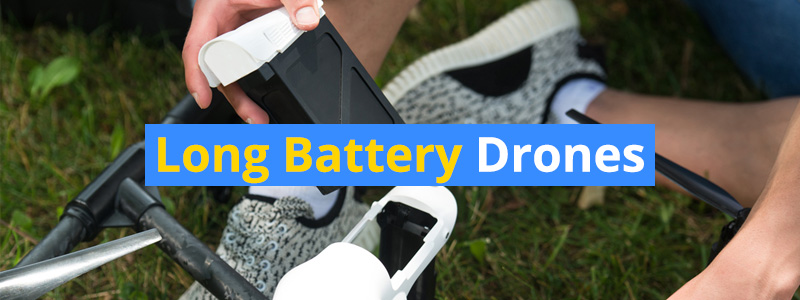

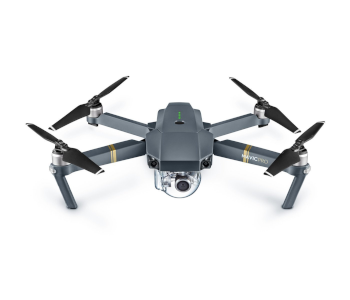 View on Amazon
View on Amazon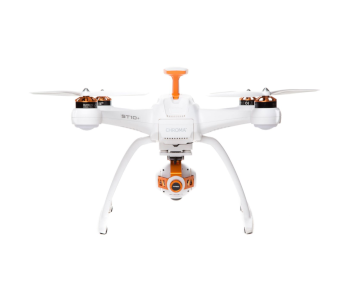 View on Amazon
View on Amazon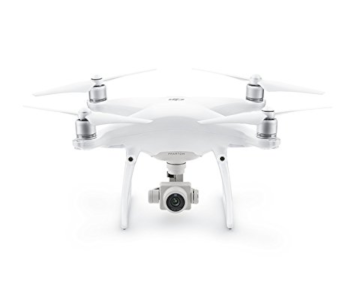 View on Amazon
View on Amazon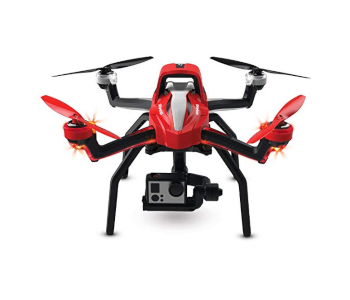 View on Amazon
View on Amazon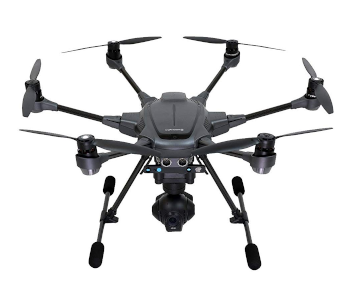 View on Amazon
View on Amazon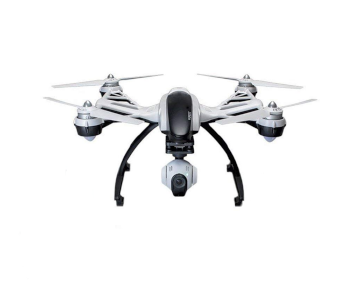 View on Amazon
View on Amazon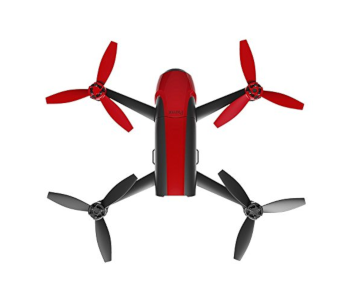 View on Amazon
View on Amazon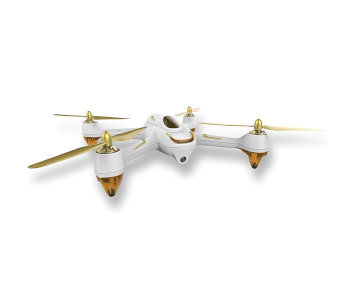 View on Amazon
View on Amazon